How to Make a Subway Map with John Tauranac
Hear from an author and map designer who has been creating maps of the NYC subway, officially and unofficially, for over forty years!


Every year, Open House New York celebrates architecture, urban design and public space by providing people with unparalleled access to architectural sites in New York. Since its inaugural year in 2003, the weekend event has grown to include over 275 participating sites across all five boroughs. This year’s OHNY weekend will take place on October 15th and 16th.
Today is the official release of the locations for 2016. In the second of several announcements in partnership with Open House New York, Untapped Cities has curated a list of Open Access sites to check out, which do not require advance reservation.
Untapped Cities is also excited to announce a giveaway for OHNY’s Weekend Passport, a VIP pin that gives the wearer and a guest front-of-the line access to as many as 150 participating sites including 70 Pine, the New York State Pavilion, City Hall, Jefferson Market Library.
To enter the contest, see our Rafflecopter embed below. You can win entries by interacting with us on Instagram, Twitter, and Facebook!
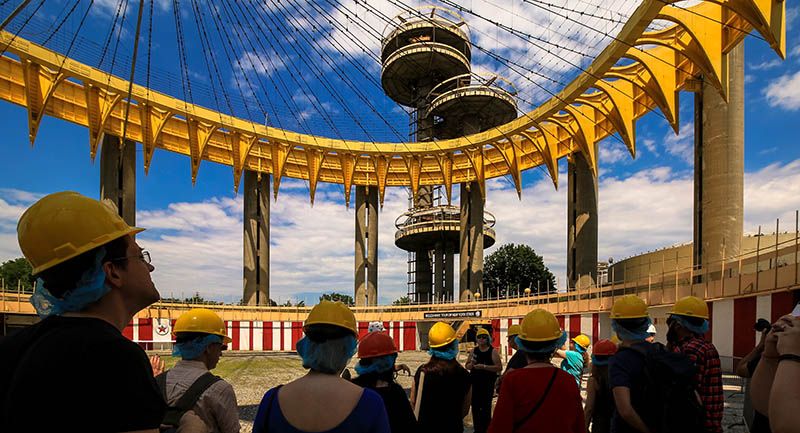
Not much remains of the 1964-65 World’s Fair aside from the ruins of the New York State Pavilion. Designed by architect Philip Johnson, the stunning structure, regarded as the jewel of Flushing Meadows-Corona Park in Queens, is comprised of three components – the “Tent of Tomorrow,” which once supported a cable suspension roof, the “Theaterama,” currently home to the Queens Theatre, and the three concrete Observation Towers, featuring two shorter towers that held once cafeterias and one taller tower that held an observation deck.
Read about the Secrets of Flushing Meadows-Corona Park. See a recent video inside of the New York State Pavilion.

The 67-story, 952-foot building on 70 Pine Street stands prominently in Manhattan’s Financial District. Built in 1931-32 by the Cities Services Company, the tower was designed in the Art Deco style during the New York skyscraper race. It currently operates as a luxury rental apartment building and extended stay hotel. The lobby and lower level will become a retail space. The building and its first floor interior are designated New York City landmarks. The reopening of 70 Pine marked the first time in decades the building has been opened up for public access.
Read about the Top 10 Secrets of 70 Pine.

The Brooklyn Army Terminal, located in Sunset Park, was once the largest military supply base in the United States through World War II. Designed by Cass Gilbert, the complex was completed in 1919, and remained in operation until the 1970s. In 1981, the federal government sold the site to city, which began leasing the property to businesses. Today, it is filled with warehouses, offices and other commercial establishments, and continues to undergo new renovation.
Read about the Top 10 Secrets of the Brooklyn Army Terminal.

The Little Red Lighthouse, known officially as Jeffrey’s Hook Light, is situated underneath the George Washington Bridge. As one of the few surviving lighthouses in New York City, the structure – built in 1880 and moved to its current site in 1921 – still serves as a reminder of the area’s history. Using its 1,000 pound fog bell and red flashing light, the lighthouse used to guide ships from Sandy Hook, New Jersey. It has remained out of operation since 1917.
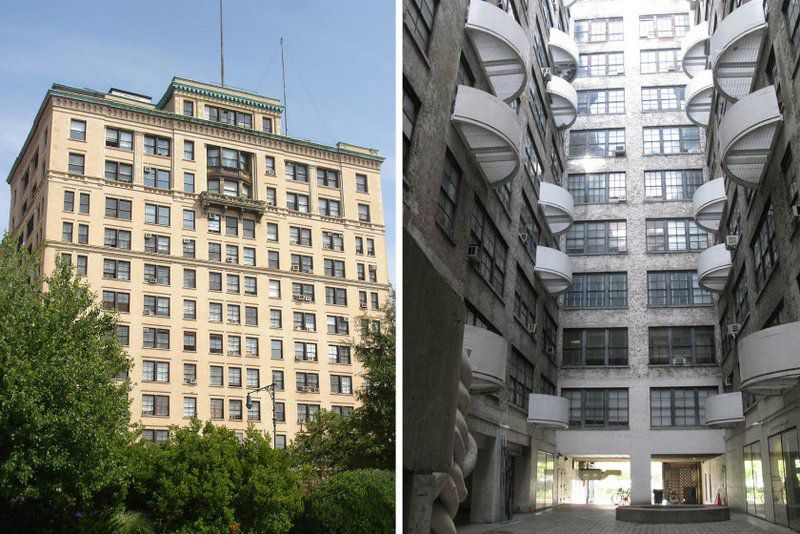
Photo via Open House New York / Roger Braimon
In response to the lack of affordable housing and available workspaces for artists in New York, Westbeth Artist Housing was developed in the 1960s by architect Richard Meier. The 13-building complex, located in the former Bell Telephone Laboratories, is now the largest artist community in the country. Today, it serves as an example of a successful adaptive reuse of an industrial building. As part of OHNY weekend, visitors will get to go on the roof of the complex to take in views that extend all the way to the Statue of Liberty.
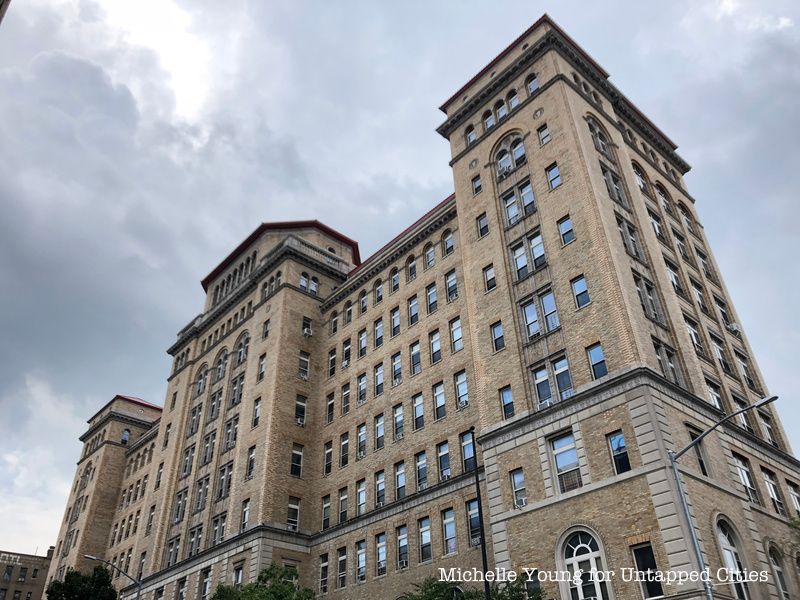
What was once the site of the Morrisania Hospital in the Bronx has since transformed into the Urban Horizons Economic Development Center thanks largely to the efforts of the Women’s Housing and Economic Development Corporation (WHEDco), a community development organization focused on developing affordable homes in the Bronx. The long-abandoned building is now home to 132 energy-efficient apartments, a commercial kitchen, family support services, and WHEDco’s Early Childhood Discovery Center, among other things.
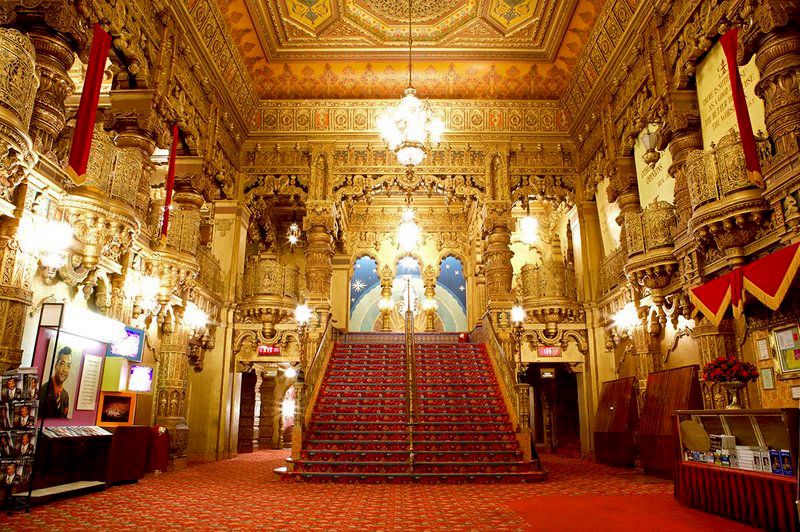 Photo via Open House New York from United Palace Theater
Photo via Open House New York from United Palace Theater
The United Palace first opened its doors in 1930 as one of the five Loews Wonder Palaces. Back then, it functioned as a vaudeville house and movie theater until preacher Rev. Ike purchased and restored the property. In honoring his legacy, the Palace now houses the United Palace House of Inspiration (UPHI) as well as the United Palace of Cultural Arts (UPCA), a nonprofit arts and cultural center that hosts a variety of events throughout the year. Its theater, with close to 3,400 seats, is the fourth largest in Manhattan.
This year, the United Palace is also part of the “ARTNOIR : City of Cultural Exchange” program, which will focus on ten sites throughout the city and the roles they’ve historically played in cultural exchange; it is the first featured program by OHNY that will highlight NYC’s multicultural communities. Find out more here.
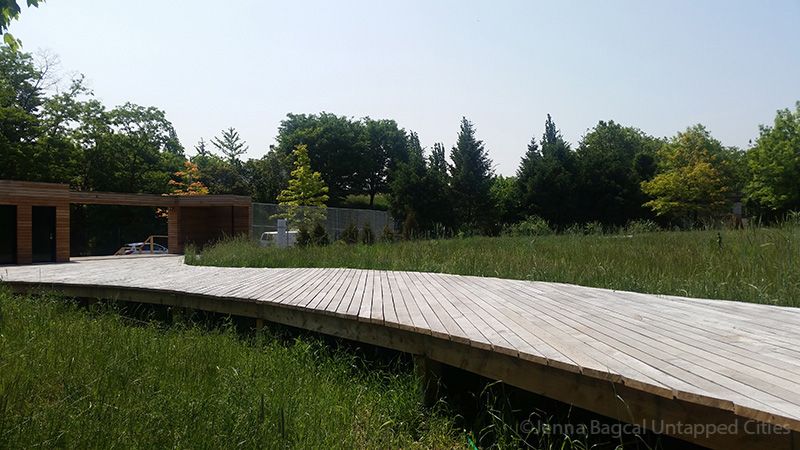
In the late 19th and early 20th centuries, the Brooklyn Naval Cemetery served as the final resting place for more than 2000 US Navy and Marine Corp officers and enlisted men. After the site was decommissioned in the 1920s, the remains were moved to Cypress Hills National Cemetery, putting the Naval Cemetery out of commission. For nearly a century, it remained inaccessible to the public until 2016, when the Brooklyn Greenway Initiative, in partnership with the Brooklyn Navy Yard Development Corporation, transformed the site into a natural park area filled with native plant species.

Located on Chambers and Centre Streets in Manhattan, the Surrogate’s Courthouse (also known as the Hall of Records) serves two main functions: it houses the courtrooms used by the Surrogate’s Court for New York County and holds the city’s Municipal Archives. The building – considered by many to be “a Beaux Arts style “masterpiece” – took eight years to construct (1899 to 1907) and cost $7 million to complete. There’s a very unknown exhibition space inside the Municipal Archives, that has hosted exhibits on Robert Moses’ most hated highway, the Lower Manhattan Expressway and Little Syria.

Designed by architect Frederick Clark Withers, Jefferson Market Library was originally constructed as the Third Judicial District Courthouse. Faced with the threat of demolition in 1958, the structure was later converted into a New York Public library branch after a large scale restoration effort, estimated to cost roughly $1.4 million. The library officially opened its doors in 1967 and continues to remain in operation.
Win an Open House New York VIP Weekend Passport from Untapped Cities! and look back at the 12 Must-Visit NYC Locations to Check Out During OHNY Weekend last year.
Subscribe to our newsletter